From 75-Kane to 34-K, or Evolution of anti-aircraft artillery between Soviet battleships
Anti-aircraft weapons of battleships during the First World War
Oddly enough, but in a number of the most common sources on the “Sevastopol” type of battleships, such as, for example, the books of A.M. Vasiliev, the issue of small-caliber artillery mounted on battleships of this type is far from being fully revealed.
Most likely, in addition to the 12 * 305-mm and 16 * 120-mm main and anti-mine guns, the “Sevastopoli” also intended to install 8 * 75-mm and 4 * 47 * mm guns, and none of them were anti-aircraft. Eight 75-mm guns were planned to be placed in pairs on the battleship's 4 towers, and they were intended exclusively for training artillery crews, and 47-mm guns were salute and decorated the nasal superstructure.
Already during the completion of the Sevastopol, the 75-mm turret guns were abandoned, and if they were installed on one or two of the first ships of the series, they were almost immediately dismantled. At the same time, subject to development aviation there was a need for means of protecting ships from it, so it was decided to equip the latest battleships with four anti-aircraft guns. Unfortunately, it is not known what caliber, since respected authors contradict each other.
For example, A.M. Vasiliev points out that the guns should have had a caliber of 47-mm, but A.V. Skvortsov writes that 63,5-mm. Apparently, they were intended to be installed in pairs on the bow and stern turrets of the main caliber, so it is likely that their installation was provided for after the decision was made to remove the 75-mm artillery training system. However, due to the lack of weapons, the Dreadnoughts anti-aircraft weapons in World War I became somewhat different: all Sevastopol battleships received three anti-aircraft artillery systems. At the same time, at the Sevastopol and Poltava itself, 2 * 75-mm and one 47-mm guns were placed, as is usually indicated in the sources, and at Petropavlovsk and Gangut - by 2 63,5-mm and one 47- mm
What were these guns?
On "three-inch", unfortunately, remains unclear. Most likely, the battleships received an anti-aircraft modification of the 75-mm / 50 Kane cannon, which we acquired from France in the already distant 1891. This is the very same 75-mm artist who, in the mass, armed our ships during the Russian-Japanese war.
During the years of its service, the gun was installed on a number of different machines: Kane machines on the central pin, Möller’s machines, arr. 1906 and 1908, the latter being a modernization of “arr. 1906 g ”, which received, however, an independent name. But, of course, there was no specialized anti-aircraft gun among them. When it became clear from the beginning of the war that the anti-aircraft guns were definitely needed for ships, it was decided to use Kan's 75-mm / 50. Only the Möller’s machine was suitable for this, since the others had a spring-in-comforter that was completely inconvenient for the anti-aircraft gun, and they took it as a basis. In effect, the 75-mm / 50 gun was turned on 180 hail. around its axis, so that the recoil devices, which were located under the barrel, were now above it.
The resulting artillery system could seem quite successful, since it informed its projectiles of a very high initial speed and had suitable ammunition. In 1915-16, a specialized anti-aircraft projectile weighing 5,32 kg was created. It is an 680 g filled explosive (tola) explosive bomb with an 22-second tube, the initial velocity of which was 747 m / s. In addition, there was a shrapnel shell, equipped with bullets as a striking element, and having the same 22-second slowdown, but the speed of 823 m / s - apparently, it could also be used as an anti-aircraft gun.
However, in fact, the gun was very confused. To begin with, the first modifications of it had an elevation angle of only 50 degrees, which was categorically insufficient for firing at air targets. Subsequently, the maximum angle of elevation was increased to 70 degrees, but 4 received such weapons from the Baltic Fleet only in July 1916, and it is extremely doubtful that such cannons were installed on the battleships. On the other hand, given the fact that there is little data on the placement of anti-aircraft guns on battleships of the “Sevastopol” type, who can know for sure?
But a small elevation angle is only one of the troubles. As mentioned above, subsequently it was brought first to 70, and then to 75 degrees. As such, the 75-mm / 50 Kane guns of the “1928 g model” served in the Soviet navy even in the early 30s.
But as anti-aircraft guns, they turned out to be cumbersome, cumbersome and inconvenient to maintain, and in all respects they lost to the specialized 76,2-mm anti-aircraft guns of the Lender system, to which we will return a little lower. We also note here that, although the Lender artillery system was considered a mod. 1914 / 1915, but in fact began to enter the fleet only from the second half of 1916 and 1917. At the same time, during the Civil War, such guns were massively withdrawn from the fleet to equip ships of river fleets, armored trains, etc. d. Thus, in principle, these guns could easily get to the Sevastopol type battleships, but it is extremely difficult to say how, when and how much.
The second of the anti-aircraft artillery systems of the Sevastopol type that entered service was the 63,5-mm cannon — and this artillery system is another mystery. The fact is that before the First World War, the fleet, of course, was preoccupied with creating an anti-aircraft artillery system for large warships: it was the 2,5-inch gun of the Obukhov factory.
Its barrel length was 38 gauges, the angle of elevation - to 75 hail. The ammunition consisted of a high-explosive grenade weighing 4,04 kg and shrapnel weighing 3,73 kg. with a fuse tube on 34 seconds, with which the gun fired at an initial speed of 686 m / s. In total, by November 1916, 20 of such guns had been manufactured, and production continued. Moreover, on 1 on April 1917, eight of them were mounted on the battleships of the Black Sea Fleet, two guns per ship. Thus, it is quite possible, and even more than likely, that Petropavlovsk and Gangut were armed with this particular artillery system. It must be said that the product of the Obukhovsky plant turned out to be unsuccessful as an anti-aircraft gun, but it was rather the fallacy of the concept of the gun, and not its design. The idea of constructing a small-caliber, but non-automatic, weapon itself was flawed: the 2,5-inch fire rate was low and was losing heavily to the British 40-mm pom pom, and this lag was not compensated by the power of the projectile, which was not enough.
Most likely, it was precisely such weapons that our two battleships received, but ... since this is not known for certain, it is worth considering other options. I must say that, in addition to the above-mentioned anti-aircraft 63,5-mm / 38 artillery systems, the Russian Imperial fleet had only one gun of similar caliber. Of course, we are talking about the famous 63,5-mm assault gun Baranovsky.
Oddly enough, the author of this article came across references to the fact that some of them could be installed on gun carriages capable of firing at aircraft. But the appearance of the anti-aircraft modification of this artillery system, even if they really existed, looks extremely doubtful on our battleships.
The Baranovsky gun with a caliber of 63,5-mm was a specialized weapon intended also for arming amphibious parties. Then there was a period when the marines were abolished, and its tasks, as it was then thought to the leadership of the Russian Imperial Navy, could be solved by sailors of warships. Given the difficulty of landing, a compromise of combat qualities and compactness inherent in mountain guns was required from the cannon - by the way, on the basis of the landing cannon, Baranovsky later made a mountain one. The landing cannon turned out to be light, the weight together with the gun carriage was just 272 kg, and from it one could even shoot from the boat.
In general, the compactness of Baranovsky’s creation was not to be taken up: the problem, however, was that the 63,5-mm gun’s combat capability was categorically insufficient. The length of its barrel was only 19,8 caliber, the mass of the projectile - 2,55 for high-explosive and 2,4 kg for shrapnel shells, although mountain tools were armed with heavier ammunition, the weight of which reached 4 kg. The short barrel limited the initial speed to only 372 m / s., The maximum firing range - to 2,8 km. Already the Russian-Japanese war showed the complete unsuitability of the weapon for modern combat. Of course, the Baranovsky gun, in its design, was in many ways ahead of its time, and with a certain reason it can be considered the first rapid-fire cannon in the world - after all, whole 5 rds / min. But nevertheless its combat capabilities were too modest, and by the beginning of the 20 century the gun was completely outdated, so it was removed from the fleet weapons in 1908. And, according to Shirokorad, the guns of this type were removed to the scrap, and not for long-term storage, so the chances that the guns of this type could return to the fleet as anti-aircraft guns are minimal.
As a matter of fact, if you compare the photos of the guns on the aft tower of the Petropavlovsk battleships
From the photo of 63,5-mm / 38 guns Obukhov plant, located on the battleship Efstafiy,
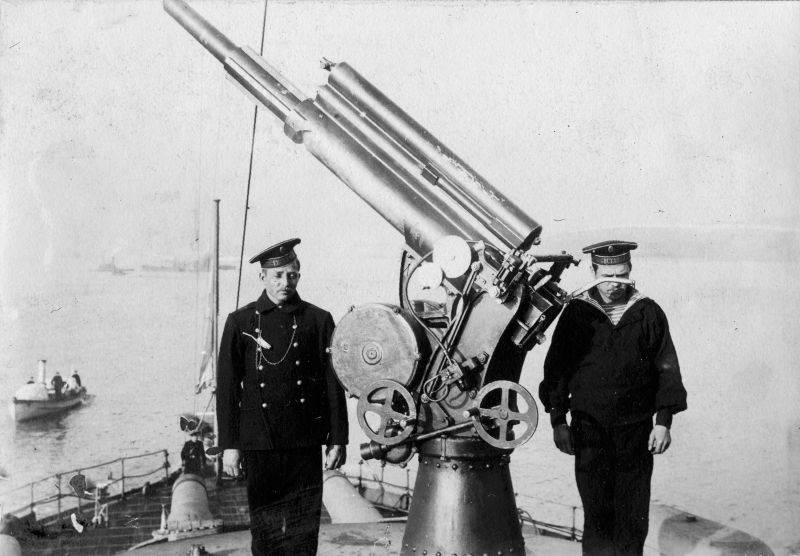
Then we will see that their silhouettes are quite similar.
But with 47-mm guns, there is no ambiguity: only classic Hochkiss 47-mm single-barrel guns could be mounted on the battleships, the machine of which was remade for firing at air targets, while the maximum angle of the gun was 85 degrees.
As for the placement of anti-aircraft artillery, the guns on different battleships were located differently. Usually, two anti-aircraft guns were placed on the aft turret of the main caliber, the third one — in different ways, for example, could be mounted on a nose turret, as it was on the Petropavlovsk battleship, but not necessarily
Modernization of air defense of the battleship "Marat"
From the books of A.M. Vasilyeva in many publications migrated the phrase:
From this phrase, and even from many photographs of our battleships in the 20-s, it should be understood that the first strengthening of the air defense system was received by the domestic battleships before the start of large-scale upgrades. Apparently, Kanet’s 75-mm guns, Obukhov’s 63,5-mm plant and Hotchkiss 47-mm were removed at the time of their return to service, and replaced by six Lender 76,2-mm anti-aircraft guns grouped in three guns on the bow and stern towers.
The Lender cannon was the first Russian artillery system designed specifically for firing at air targets: at the time of its creation it was completely successful and fully responded to its tasks. This 76,2-mm gun with a barrel length 30,5 calibers and maximum elevation angle of the last 75 hail. used unitary ammunition, which allowed to bring the rate of fire to 15-20 spok. / min. The ammunition consisted of a high-explosive grenade and a shrapnel shell weighing 6 and 6,5 kg, which were fired at an initial speed of 609,6 and 588,2 kg. respectively. But the gun Lender could use any ammunition of the famous 76,2-mm "three-inch" arr. 1902, and besides, other types of shells were subsequently created for it.
The Russian armed forces received the first batch of a dozen of such guns in 1915, in the following year another 26 of such guns was produced, and in 1917 - 110. They were also produced after the revolution, the last artillery system of this type was already produced in 1934.
For its time, this was a good decision, and it can be said that in the 20-s of the air defense of the ships more or less corresponded to the challenges of time, but, of course, by the beginning of the 30-s, completely different weapons were required. Unfortunately, the “Marat” never received it and walked with the six Lender trunks right up to 1940, only here its air defense was finally strengthened.
The old artillery systems were dismantled, and 10 of more modern 76,2-mm guns was installed to replace them. Six of them, placed in 34-K single-unit installations, took places on the bow and stern towers, and 4 also absolutely the same guns, but in double-barreled installations 81-K, placed on sections, instead of a pair of stern 120-mm guns. And I must say that it is very difficult to give an unambiguous assessment to these systems.
On the one hand, the 76,2-mm domestic anti-aircraft guns were quite good artillery systems based on the German Flak L / 75 XNUM anti-aircraft gun. More precisely, the ground gun 59-K was created on the basis of the German cannon, and only then it was “mastered” in the 3-K. But on the other hand, the documentation and technical processes for this weapon were acquired in the USSR in 34, and since then, of course, the tool “a little” has become outdated.
It had good (for three-inch) ballistic data - with a barrel length of 55 caliber, the 6,5-6,95 initial speed was reported to the 801-813 kg shells, the initial speed of 75-40 m / s. -mm Pak 34 anti-tank gun. Accordingly, the maximum firing range of the 13-K reached 9,3 km, and the maximum reach in height - 34 km. The maximum angle of elevation 85-K reached 127 hail. And if we look at perhaps the most effective shipboard anti-aircraft gun of the Second World War era, the US 38-mm / 34 artillery system, we will see that its similar parameters are not so superior to the 16-K. The American anti-aircraft gun had a maximum firing range of about 12, and its height reach was about 34 km. At the same time, the 15-K with a well-prepared calculation and timely supply of ammunition could develop a rate of fire up to 20-88 spok. / Min, which was quite at the level of the excellent German 34-mm anti-aircraft guns. In general, XNUMX-K was quite convenient for calculations and a reliable tool.
However, on this, his advantages, in general, ended, and very numerous minuses began. The first of these was the viciousness of the very idea of choosing for an anti-aircraft gun caliber 76,2 mm. Good ballistics, of course, made it possible to throw the projectile far enough, but the problem was that the parameters of the long-range air target can only be determined very approximately, and the projectile flies for a while, and the aircraft can also maneuver. All this leads to a large error in aiming and the extreme importance of such a parameter of an anti-aircraft gun, such as a projectile attack zone, but for 76,2 mm guns, the projectile power was too small. The heaviest 34-K ammunition - 6,95 kg high-explosive fragmentation grenade, contained only 483 grams of explosive. For comparison, the German anti-aircraft gun 88-mm, which is not so superior in caliber 9 kg, fired 850 gangles of explosives. That is, the German anti-aircraft gun exceeded the Soviet artillery system in 1,5 by weight of the projectile, and almost 2 in charge. What can we say about American 127-mm ammunition? The projectile of the American 127-mm / 38 guns weighed 25 kg and carried in itself from 2,8 to 3,8 kg BB! But even this, in general, was not enough to reliably defeat aircraft of the Second World War, so the Americans increased their chances by developing and massively deploying radar fuses.
But sooner or later the plane will overcome the distance separating it from the ship and will be in close proximity to it. And here the ability of an anti-aircraft gun to accompany a flying plane acquires great importance, that is, in other words, the anti-aircraft gun must have sufficient horizontal and vertical guidance in order to “twist the barrel” after the plane. Here, alas, 34-K is not doing too well either: its vertical and horizontal guidance rates were 8 and 12 degrees / sec. Is it a lot or a little? For Italian 100-mm Minizini anti-aircraft guns, these speeds were 7 and 13 degrees / sec. respectively. However, almost all sources point out that it was not enough to fight aircraft of the Second World War. Accordingly, this is true for 34-K. And again, if we recall that the prototype of 34-K, the German Rheinmetall, was designed at the end of 20-s, when combat aircraft flew much slower, the speeds of vertical and horizontal pickup were quite enough. However, in 1940, it is no longer.
And so it turned out that for firing at long distances of the domestic 34-K there was not enough power of projectiles, and for fighting with aircraft at short distances - the speed of vertical and horizontal pickup. This did not, of course, make the 34-K useless, but as medium-caliber anti-aircraft artillery it was frankly weak. And the same applies to 81-K, which was practically the same gun, only the “Spark” on another machine.
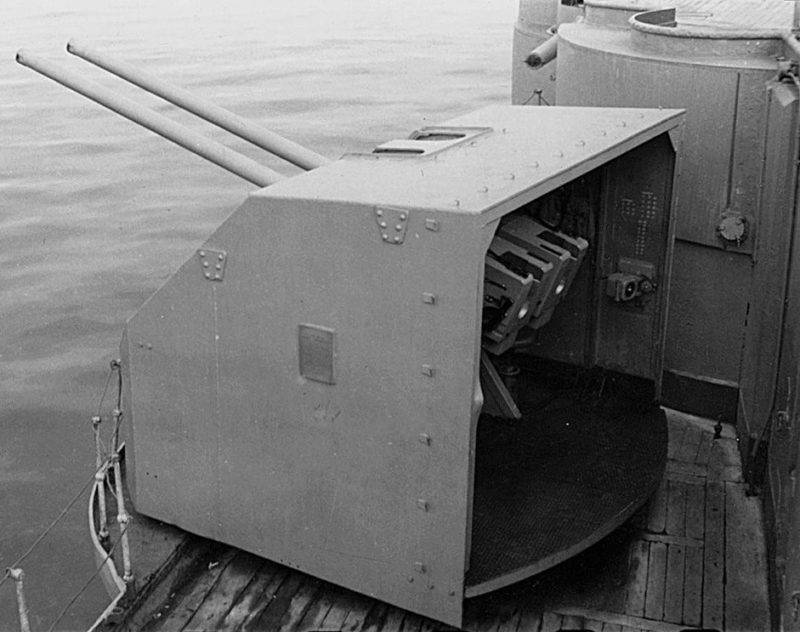
The weakness of the average caliber of the Marat air defense, alas, was complemented by its small number, yet 10 trunks for the ship of the class “battleship” (even if it is relatively small) should be considered absolutely insufficient.
As for the fire control devices, the 76,2-mm anti-aircraft guns were divided into 2 batteries, fore and aft, and for each of them there was one rangefinder with a three-meter base, and a MPUAZ “Tablet” set. Unfortunately, the author was not able to find a detailed description of the capabilities of this MPUAZ, but it is very easy to fill this gap by logical reasoning.
The fact is that the entire control system of anti-aircraft (and not only anti-aircraft) fire of any ship can be divided into 3 parts. The first is target observation devices, that is, Viziers, range finders, artillery radars, and so on. The second part is the computing devices, which, taking into account the mass parameters of the target, the atmosphere, the ship, guns and ammunition, form the solution - pickup angles, preemption. And finally, the third part is the instruments that transmit the received solution directly to the anti-aircraft guns and give the shooting manager feedback from them.
So, the observation device for the Marat anti-aircraft fire control system was the “3-meter” range finders, but there appeared to be no computing devices. The fact is that similar devices appeared in the Russian fleet for the first time on the battleship "Paris Commune", light cruisers of the 26 project and destroyers of the 7 project, and there they all had other naming conventions. And the MPAUAZ "Tablet" was installed on the "Marat" in 1932, that is, for the first time they operated the Lender 6 guns. That is, in those years, there were no domestic computing instruments for anti-aircraft fire in the USSR, and there is no information that the Tablet was purchased abroad.
Accordingly, it would not be a mistake to assume that the MPUAZ “Tablet” was only fire control devices, which allowed the fire control officer to transfer data for firing calculations with the guns. But he obviously needed to calculate the necessary parameters manually. So it is quite possible that the “Tablet” was generally used only for bringing the distance to the target to be calculated, and they had already determined the rest of the shooting parameters on their own.
Subsequently, small-caliber anti-aircraft artillery was also installed on the Marat, but we will talk about it in the next article.
To be continued ...
- Andrei from Chelyabinsk
- Soviet battleships between wars
Battleships type "Marat". Modernization of the main caliber
Modernization of Soviet battleships: anti-mine caliber and torpedoes
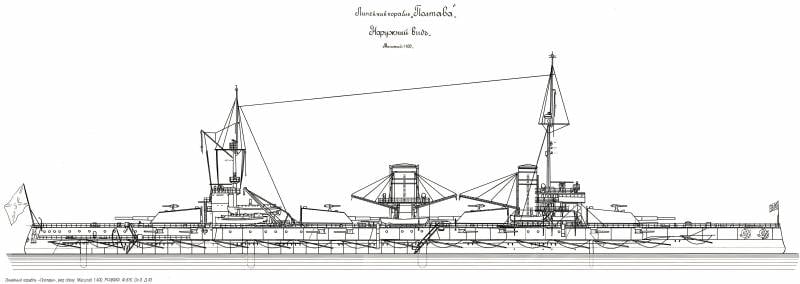
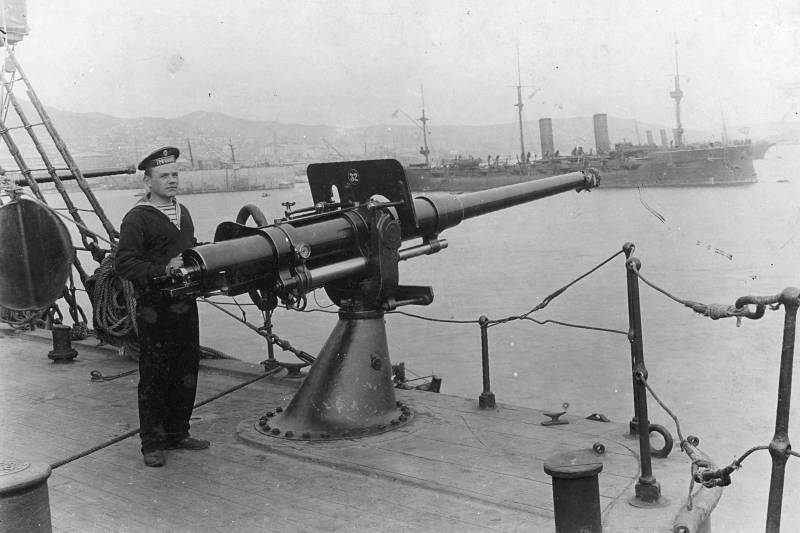
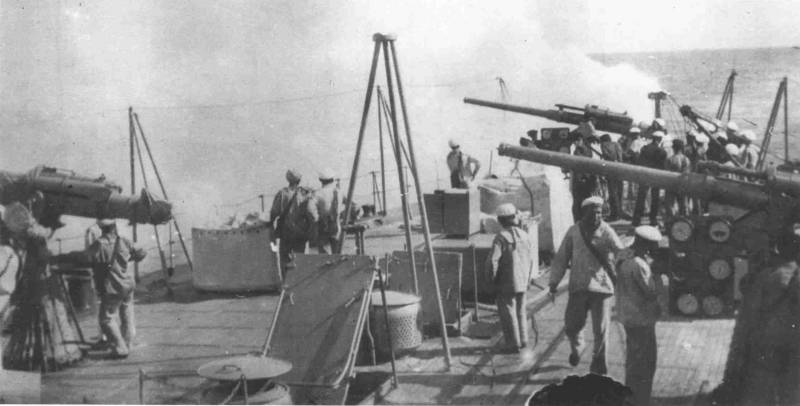
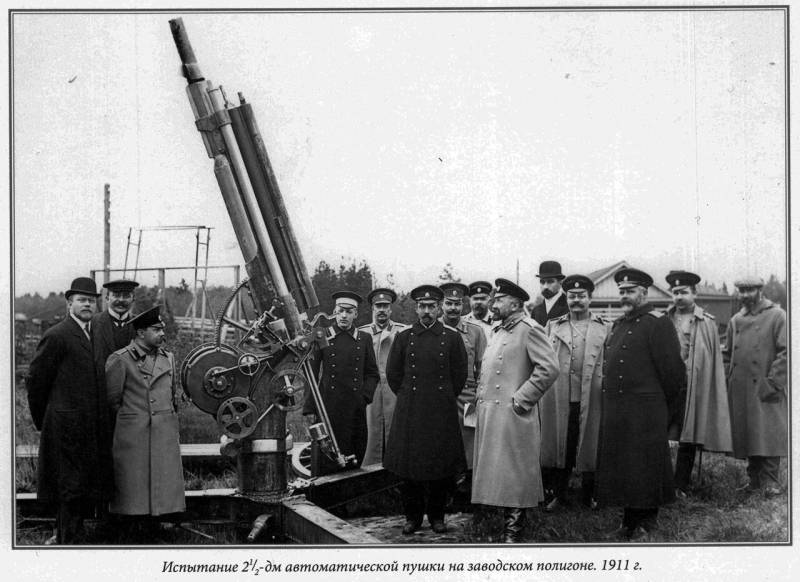
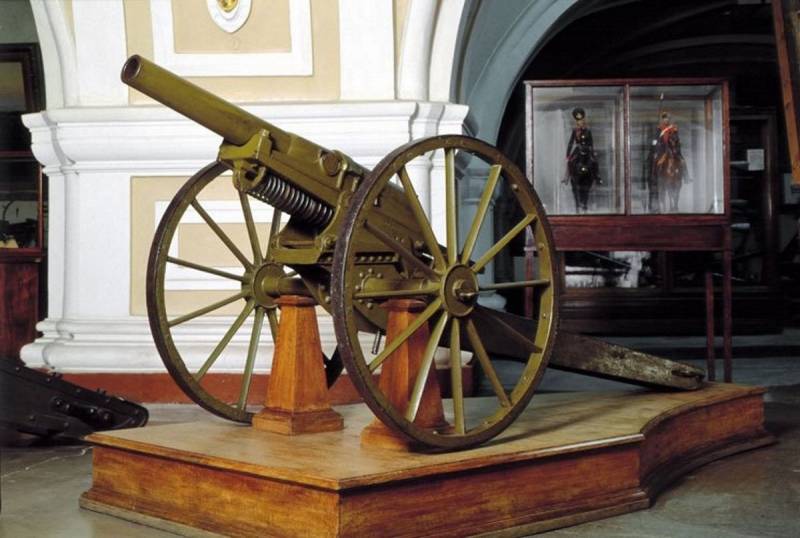
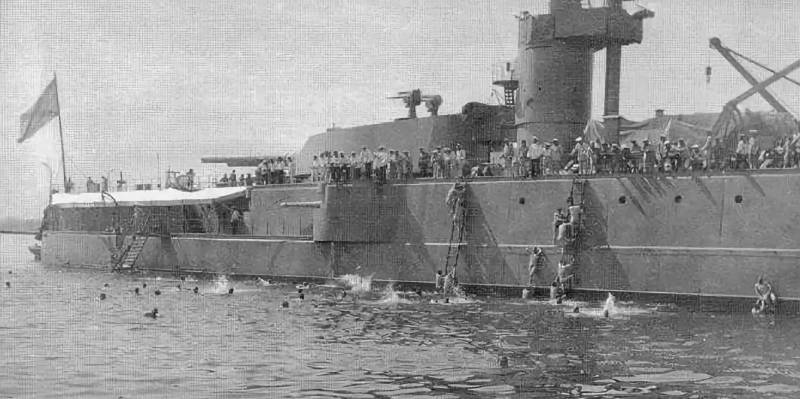
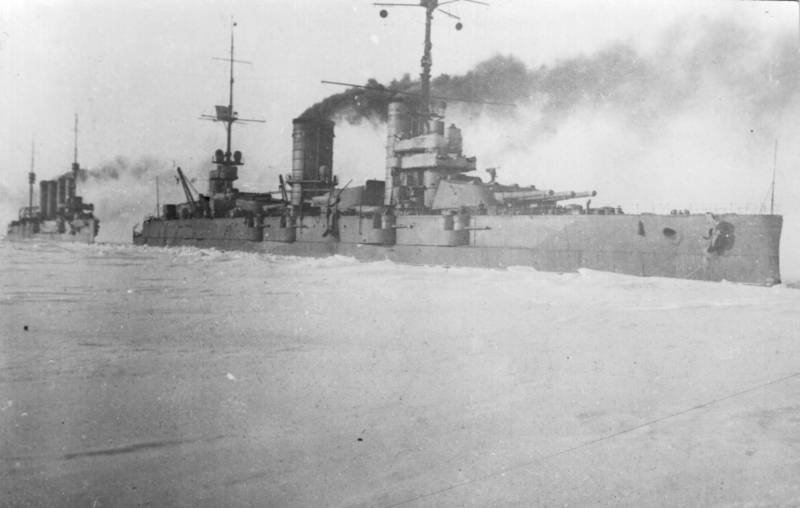
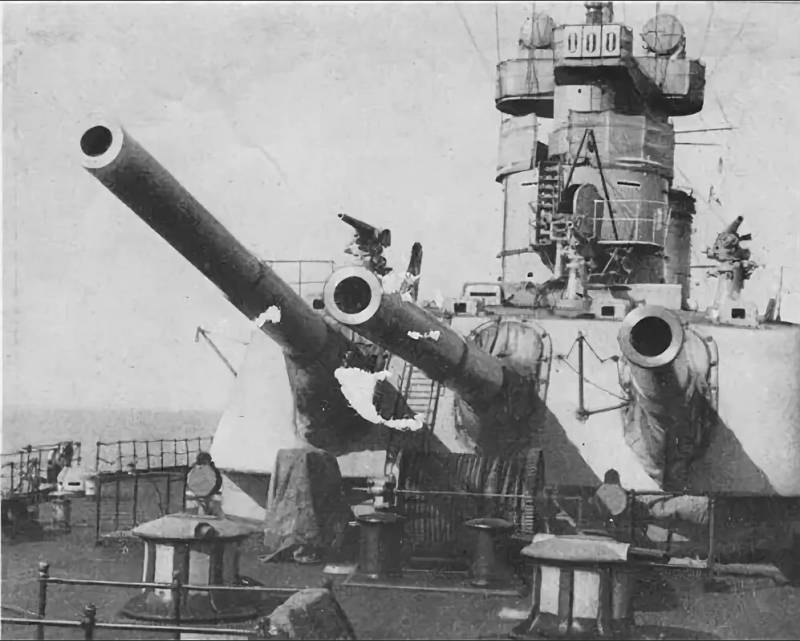
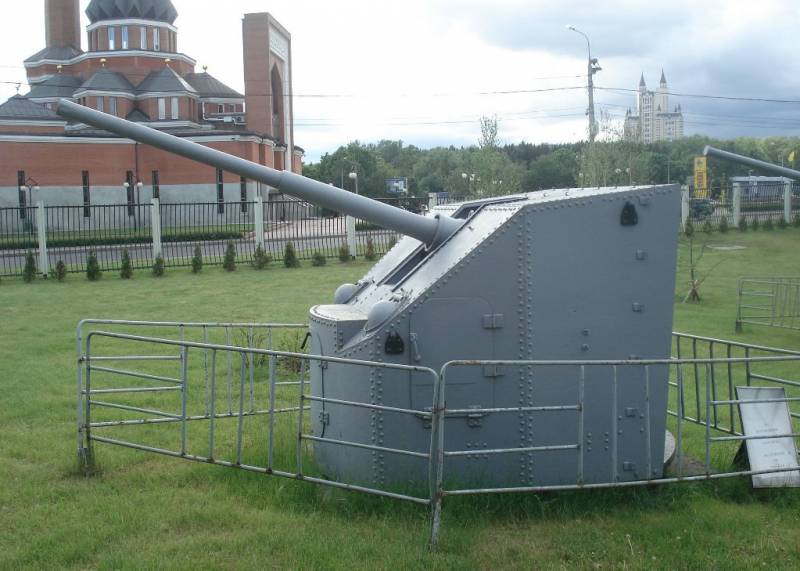
Information